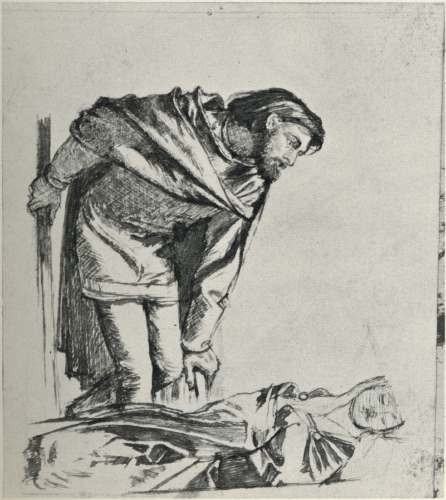The Man Behind "The Lady"
Portia Favro and Marilee Devries
1316
|
The writer Elizabeth Nelson argues in her work, “The Lady of Shallot” that artists of the time show “the poem in a number of ways, the most popular of which include variations on the themes of the embowered lady isolated from life and love and the conflict between the artist's own sensual vision and his need to experience life directly.”
@
Nelson, Elizabeth "The Empowered Woman", Pictorial Interpretations of 'The Lady of Shalott'" Adapted from the author's "Tennyson and the Ladies of Shalott,"Ladies of Shalott: A Victorian Masterpiece and its Contexts, Ed. George P. Landow, Brown U.: 1979. http://www.victorianweb.org/authors/tennyson/losbower.html As there was a psychological and societal tone and need for women to be kept within the bounds of a home setting for protection and to serve a purpose during the Victorian Period, Tennyson’s poem shows a similar situation in “The Lady of Shalott”. @ Nelson, Elizabeth "The Empowered Woman", Pictorial Interpretations of 'The Lady of Shalott'" Adapted from the author's "Tennyson and the Ladies of Shalott,"Ladies of Shalott: A Victorian Masterpiece and its Contexts, Ed. George P. Landow, Brown U.: 1979. http://www.victorianweb.org/authors/tennyson/losbower.html According to Hunt in a commentary about Poems, he says that during a discussion with the publisher, Moxon about the book and The Lady that, “The Lady of Shalott" was the picture and character he cared for ‘the most of all’(page 74).”@Hunt, William Homan,Pre-Raphaelitism and the Pre-Raphaelite Brotherhood,(1914) published by Publisher:E. P. Dutton and Company. Pages 73-74 http://www.rossettiarchive.org/docs/nd467.h9.1914.2.rad.html Perhaps this is a moment of connection between Tennyson, Moxon and Hunt within Poems, as their is an underlying feeling to express and tell this woman’s story and perhaps reveal a comment upon society - even with the separation of time. |
Another way to look at Tennyson’s role in commenting on women in Victorian society is through the eyes of the Pre-Raphaelites, a radical group developed in 1849 that challenged the normalities of artistic methods@Frauenhofer, Erin, "Men vs. Women: Illustrating 'The Lady of Shalott'", Boston University, 2003. http://www.victorianweb.org/authors/tennyson/frauenhofer.html. According to writer Erin Frauenhofer’s article, “Men vs. Women: Illustration ‘The Lady of Shallot’”, artists were typically trained at the Royal Academys throughout Europe, and the Pre-Raphaelites were challenging and rebelling against the teachings@Frauenhofer, Erin, "Men vs. Women: Illustrating 'The Lady of Shalott'", Boston University, 2003. http://www.victorianweb.org/authors/tennyson/frauenhofer.html. For example, Frauenhofer says that “Royal Academy schools, which emphasized pyramidal compositions of figures, imbalanced lighting, and the prominence of tone and shadow at the expense of color."@Frauenhofer, Erin, "Men vs. Women: Illustrating 'The Lady of Shalott'", Boston University, 2003. http://www.victorianweb.org/authors/tennyson/frauenhofer.html The Pre-Raphaelites instead focused on using more two-dimensional and flat figures, and realism (like a photograph) within their art, instead of playing up various parts of the visual hierarchy.@Frauenhofer, Erin, "Men vs. Women: Illustrating 'The Lady of Shalott'", Boston University, 2003. http://www.victorianweb.org/authors/tennyson/frauenhofer.html
This art movement connects to the “Lady of Shalott” as an inspiring subject, whom male painters used to show different roles of women in Victorian society. It is argued that the poem itself “appealed to these artists because of its eroticized medieval setting and tragic subject, popular themes in Pre-Raphaelite art...painted various scenes from the poem, capturing their fascination with themes of tragic love, the beautiful, imprisoned woman figure, and the conflicted role of the artist.”@Frauenhofer, Erin, "Men vs. Women: Illustrating 'The Lady of Shalott'", Boston University, 2003. http://www.victorianweb.org/authors/tennyson/frauenhofer.html These pieces show how men viewed women in society largely as ornaments and used to fill a very specific role as “seen but not heard” and to be visually appealing but not insightful with conversations.
In contrast, while male artists may have had a more sexualized portrayal of “The Lady”, female painters who emerged during the Victorian Period such as Elizabeth Siddal, Inez Warry and Florence Rutland also created their own versions of the Lady.@Frauenhofer, Erin, "Men vs. Women: Illustrating 'The Lady of Shalott'", Boston University, 2003. http://www.victorianweb.org/authors/tennyson/frauenhofer.html Overall, the female interpretation was a less dramatic and perhaps more realistic view of women in society - touching and showing Pre-Raphaelite views. Through Tennyson’s words, artists were depicting various interpretations and views of women from the text in Victorian society, which do not all necessarily agree with one another.
This art movement connects to the “Lady of Shalott” as an inspiring subject, whom male painters used to show different roles of women in Victorian society. It is argued that the poem itself “appealed to these artists because of its eroticized medieval setting and tragic subject, popular themes in Pre-Raphaelite art...painted various scenes from the poem, capturing their fascination with themes of tragic love, the beautiful, imprisoned woman figure, and the conflicted role of the artist.”@Frauenhofer, Erin, "Men vs. Women: Illustrating 'The Lady of Shalott'", Boston University, 2003. http://www.victorianweb.org/authors/tennyson/frauenhofer.html These pieces show how men viewed women in society largely as ornaments and used to fill a very specific role as “seen but not heard” and to be visually appealing but not insightful with conversations.
In contrast, while male artists may have had a more sexualized portrayal of “The Lady”, female painters who emerged during the Victorian Period such as Elizabeth Siddal, Inez Warry and Florence Rutland also created their own versions of the Lady.@Frauenhofer, Erin, "Men vs. Women: Illustrating 'The Lady of Shalott'", Boston University, 2003. http://www.victorianweb.org/authors/tennyson/frauenhofer.html Overall, the female interpretation was a less dramatic and perhaps more realistic view of women in society - touching and showing Pre-Raphaelite views. Through Tennyson’s words, artists were depicting various interpretations and views of women from the text in Victorian society, which do not all necessarily agree with one another.


